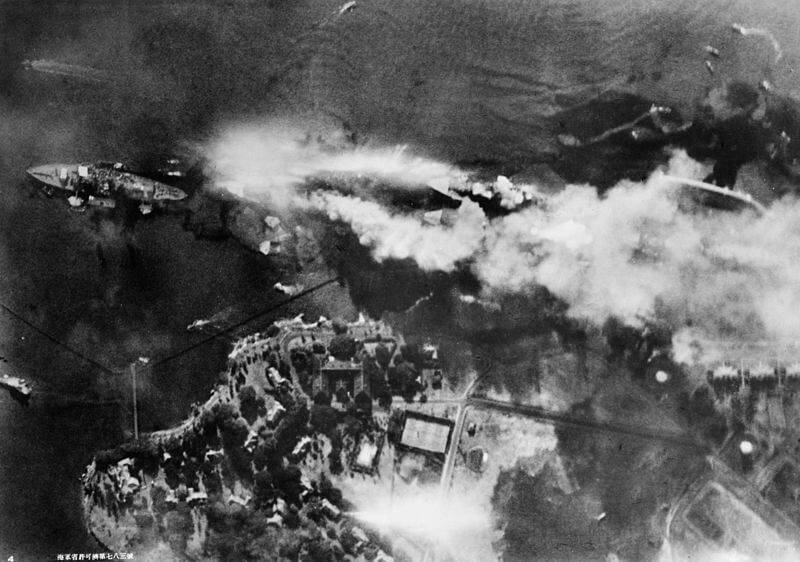USS Neosho - From Pearl Harbor to the South Pacific
Stretching 463 miles, cutting through Oklahoma and Kansas, is the Neosho River. Dozens of towns call the banks of the Neosho home, but it’s an otherwise unremarkable waterway in the heart of the United States. What makes the Neosho memorable, however, are the ships of the US Navy that bore its name.
The most notable of them is the Cimarron-class fleet oiler USS Neosho (AO-23). When she was launched and commissioned in 1939, her crew had no inkling that, two years later, the 553’-long oiler would become a part of American history.
USS Neosho Survives Pearl Harbor
Once commissioned, the Neosho started to ferry fuel for naval aircraft from the west coast of the United States to the naval base at Pearl Harbor. Many missions went off without a hitch, but then she moored at Pearl Harbor on Dec. 6, 1941. With her fuel cargo emptied, the Neosho was prepared to make the return voyage the following day.
She wouldn’t get the chance to leave the harbor, however; at 0755 that Sunday morning, alarms started blaring across the harbor. Japanese fighters and bombers were striking the harbor, dropping modified torpedoes to strike the battleships moored along Ford Island.
The Neosho’s captain, Commander John S. Phillips, sprang into action and safely maneuvered her through the chaos. Though her cargo had already been off-loaded, a direct hit from a bomb or torpedo could have been fatal to the lightly armed oiler. Phillips successfully removed the Neosho from harm's way, though three of her crew were wounded when Japanese fighters started strafing the ship.
Service in the Pacific Theater
Pearl Harbor was devastating, but the USS Neosho continued her service and for the next five months sailed either alone or with aircraft carriers to continue ferrying fuel. At the start of the Battle of the Coral Sea, the Neosho continued refueling the carrier USS Yorktown (CV-5) and the heavy cruiser USS Astoria (CA-34), but her service would come to an end shortly after.
While being escorted by the destroyer USS Sims (DD-409), the Neosho was spotted by Japanese search planes. Though the oiler was a high-priority target for the precious cargo she typically carried, the search planes misidentified her as a carrier. Assuming a carrier force was nearby, aircraft from the Japanese carriers Shokaku and Zuikaku launched, hoping to cut off the American fleet.
Instead, they were forced to return to the two smaller ships when no other vessels were found. Both the Sims and the Neosho suffered heavy damage with the oiler being left in flames and in danger of splitting in half. Though her crew fought back with the eight guns she had, there was no fighting off the Japanese planes.
The Sims was sunk and the Neosho was left badly stricken, though her crew worked heroically to keep her afloat until help could arrive. After four days, a Royal Australian Air Force plane spotted her, followed by an American PBY Catalina. The destroyer Henley (DD-391) was summoned to rescue the exhausted crew and when the 123 survivors were safe, the Neosho was scuttled.
For her time in service, the USS Neosho earned two battle stars.









